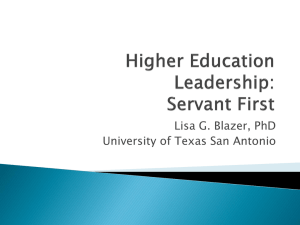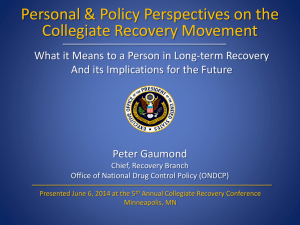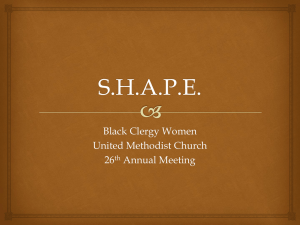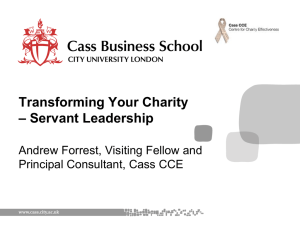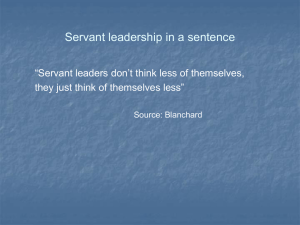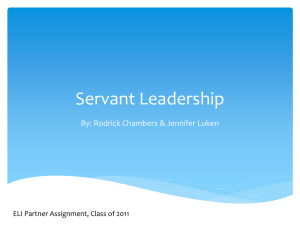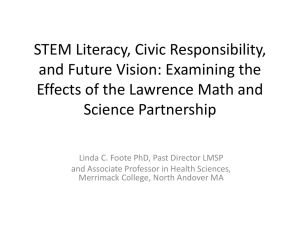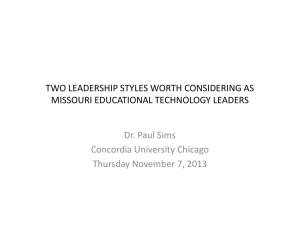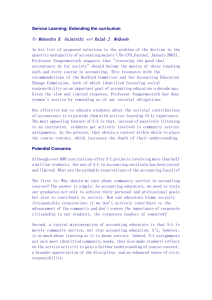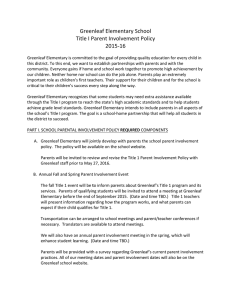Seven Pillars of Servant Leadership.
advertisement
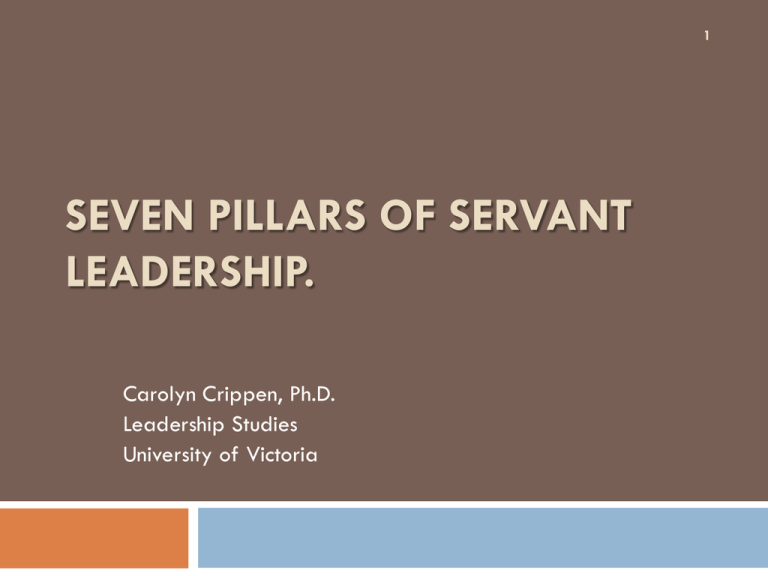
1 SEVEN PILLARS OF SERVANT LEADERSHIP. Carolyn Crippen, Ph.D. Leadership Studies University of Victoria Greenleaf’s (1970) Servant-Leader 2 A S-L is servant first…It begins with the natural feeling that one wants to serve, to serve first. Then conscious choice brings one to aspire to lead. The best test is: Do those served grow as persons? Do they while being served, become healthier, wiser, freer, more autonomous, and more likely themselves to become servants? And what is the effect on the least privileged in society? Will they benefit, or at least not be further harmed? (p. 7) Sipe & Frick’s (2009) Servant-Leader 3 A S-L is a person of character who puts people first. S/he is a skilled communicator, a compassionate collaborator who has foresight, is a system thinker, and leads with moral authority. (p. 4) Leadership Shift 4 Humility certainly helps limit the development of a toxic, defensive, in-your-face leader into one who draws upon the strength of others. Basically leaders’ distrust in S-L stems from their own insecurity and egotism. They do not have the confidence that others will follow them, if they cannot exercise coercive power indiscriminately. (Sipe & Frick, 2009, p. 29) Humility 5 The practice of S-L as embodied in the trait of humility requires courage of intentional vulnerability and voluntary surrender of one’s ego for the sake of others and the organization. Of course no-one can do this overnight. Some never begin the journey, while precious few stay with it to competition. But the journey is the key for those seekers known as Servant-Leaders. (Sipe & Frick, 2009, p.29) First Steps 6 Be courageous : intentionally make yourself vulnerable to the possibility that you are not right all the time. Ask yourself: Am I right? What is my second thought? Am I doing a wise thing? Will this action meet the conditions of Greenleaf’s Best Test? (Sipe & Frick, 2009, p. 30) Serves a Higher Purpose 7 Joseph Jaworski states, With Greenleaf, I have come to believe that if we are willing to take the most difficult journey toward self-discovery and lifelong learning, we will lead lives filled with meaning and adventure. Moreover, we will gain the capacity to create and shape the future for ourselves and our organizations in ways we can hardly imagine. (Synchronicity, 1998, p. 21) Seven Pillars 8 1. Person of character. Makes insightful, ethical, and principle-centered decisions. Maintains integrity Demonstrates humility Serves higher purpose 2. Puts people first. Helps others meet their highest priority development needs. Displays a servant’s heart Is mentor-minded Shows care & concern …continued 9 3. Skilled communicator. Listens earnestly & speaks effectively. Demonstrates empathy Invites feedback Communicates persuasively 4. Compassionate collaborator. Strengthens relationships, supports diversity, and creates a sense of belonging. Express appreciation Builds teams & communicates Negotiates conflict …continued 10 5. Has foresight.* Imagines possibilities, anticipates the future, & proceeds with clarity of purpose. Visionary Displays creativity Takes courageous & decisive action 6. Systems thinker. Thinks & acts strategically, leads change effectively, & balances the whole with the sum of its parts. Comfortable with complexity Demonstrates adaptability Considers the Greater Good. …continued 11 7. Leads with moral authority. Worthy of respect, inspires trust & confidence, and establishes quality standards for performance. Accepts & delegates responsibility Shares power & control Creates a culture of accountability The 21 competencies 12 We realize that not every accomplished S-L demonstrates all twenty-one traits all of time. But whenever any traits are present in adequate measure, and as they accumulate, they serve to enrich and fortify the S-L and those who surround him or her. These competencies can also represent a set of performance appraisal metrics- barometers of professional growth for the continuous evaluation of your leadership strengths and development needs. Ask Yourself- The Personal Journey 13 Identify and reflect upon what needs changing. Express a desire to change. Find and claim incentives to change. Gain access to knowledge and skills associated with the target behaviour. Practice, practice, practice. Feedback on efforts to change. Meet Greenleaf’s Best Test about how others grow as a result of your action. Then, Ask Others14 The Institutional Journey 1. 2. 3. 4. 5. Discovery Desire and incentive to change Learning Practice Feedback and evaluation- The Best Test Implementation of 7 Pillars 15 Cannot be implemented with a few memos and pep talks. Requires a dedicated effort of study, skill practice, feedback, and reflection about your deepest values. Everything begins with the individual (Greenleaf). Servant Leadership starts with you. Only then can it become embedded into your organization’s operations, climate, and culture.
